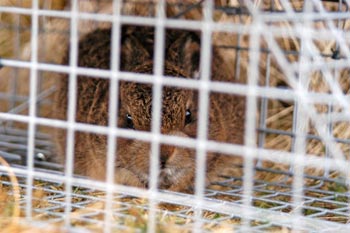 How are mountain hare populations linked in space, and which and how far do individual hares move?
How are mountain hare populations linked in space, and which and how far do individual hares move?
Anthropogenic pressure and climate change are generating an increasingly fragmented landscape in which natural populations are becoming more isolated and subsequently prone to greater risk of local extinction due to stochastic processes, over-exploitation, or frustrated dispersal. The population dynamics of species in such fragmented or patchy landscapes can be described by metapopulation dynamics in which local subpopulations with largely independent dynamics exist within patches of suitable habitat embedded within a matrix of less or unsuitable habitats.
Dispersal is recognised, along with fecundity and survival, as one of the main drivers of population dynamics and is central to understanding how populations respond to exploitation, and climate change. Despite its importance dispersal is not well understood and using mountain hares as a case study this project aims to better understand how natural populations are linked by the movement of individuals and to identify if some types of individual - for example juveniles or adult - are more likely to disperse than other individuals, and over what distances.
Back to Management of Mountain Hares main page
|
Updated: 23 Jan 2024, Content by: SN
|
